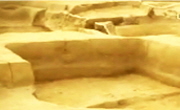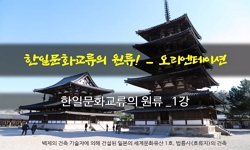These relevant remains and artifacts are crucial pieces of information which fills in our gaps of Baekje's historical period. Among them, the Corpus of Characters not only reveals a clearer picture of that period, but also proves some well-known histo...
http://chineseinput.net/에서 pinyin(병음)방식으로 중국어를 변환할 수 있습니다.
변환된 중국어를 복사하여 사용하시면 됩니다.
- 中文 을 입력하시려면 zhongwen을 입력하시고 space를누르시면됩니다.
- 北京 을 입력하시려면 beijing을 입력하시고 space를 누르시면 됩니다.
https://www.riss.kr/link?id=A82759605
- 저자
- 발행기관
- 학술지명
- 권호사항
-
발행연도
2011
-
작성언어
-
- 주제어
-
KDC
120
-
자료형태
학술저널
-
수록면
159-204(46쪽)
- 제공처
- 소장기관
-
0
상세조회 -
0
다운로드
부가정보
다국어 초록 (Multilingual Abstract)
These relevant remains and artifacts are crucial pieces of information which fills in our gaps of Baekje's historical period. Among them, the Corpus of Characters not only reveals a clearer picture of that period, but also proves some well-known historical facts to be false. In the repair process of the Stone Pagoda of Miruksa Temple, more than five hundred artifacts were excavated in January 2009, including an enshrined metal record with small crystals set in Sarigong. This metal record sealed with cremated remains was meant to lay the groundwork for the future prosperity of the Baekje Dynasty. The process of housing this artifact was promoted by the Baekje Empress with the establishment of the Buddhist temple in 639. Through this excavation, the establishment date as well as the intention of the Miruksa Temple were verified. The new discoveries have been attracting an academic interest since the information from some of these reports is considerably different from that which is found in "The Heritage of the Three States". Especially regarding the Sunhwa Princess Story in the Chapter Gi-ei, various opinions have been suggested surrounding its authenticity. In 1990, the Karac Historial Development Institute started working on the interpretation of the written materials which had had an incalculable value. These artifacts began to be unburied from the period of Korea's liberation and continued to be disintered until that time. In 1992, they issued "inscription of Korean ancient" which contributed a great deal to the studies of Korean ancient history. After the publication, a large amount of ancient scripts were found however, the process of interpretation and annotation was not well organized. For that reason, this paper is written in order to show the newly collected information and offer translated and annotated data which is divided into more distinct categories for the corpus of Characters which are engraved onto stones, metal relics and earthenwares·bricks·tiles.
목차 (Table of Contents)
- Ⅰ. 머리말
- Ⅱ. 신발견 백제 문자자료의 현황
- Ⅲ. 돌·금속에 새겨진 문자
- Ⅳ. 토기, 전돌에 새겨진 문자
- Ⅴ. 기와에 새겨진 문자
- Ⅰ. 머리말
- Ⅱ. 신발견 백제 문자자료의 현황
- Ⅲ. 돌·금속에 새겨진 문자
- Ⅳ. 토기, 전돌에 새겨진 문자
- Ⅴ. 기와에 새겨진 문자
- Ⅵ. 맺음말
- 참고문헌
동일학술지(권/호) 다른 논문
-
- 서울여자대학교 인문과학연구소
- 朴正顺(Piao Zhengshun)
- 2011
-
- 서울여자대학교 인문과학연구소
- PGS. TS. PHAN AN
- 2011
-
- 서울여자대학교 인문과학연구소
- Tran Thi Van Yen
- 2011
-
- 서울여자대학교 인문과학연구소
- 이재성(Lee, Jaeseong)
- 2011




 스콜라
스콜라







